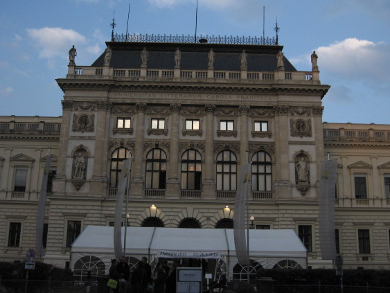The ANAKON, the main joint conference of Austrian, German, and Swiss analytical chemists, took place from March 23 to March 26, 2015, at Karl Franzens University in Graz, Austria.
Starting in 1985, the ANAKON takes place as a biennial joint conference organized by the division “Analytical Chemistry” of the Gesellschaft Deutscher Chemiker (GDCh, German Chemical Society), the Österreichische Gesellschaft für Analytische Chemie (ASAC, Austrian Society of Analytical Chemistry), and the Division of Analytical Chemistry of the Schweizerische Chemischen Gesellschaft (SCG, Swiss Chemical Society). More than 460 scientists from all areas of analytical chemistry discussed recent trends, new technologies and applications, and future challenges. The conference program was arranged in three parallel sessions with altogether 110 lectures in 11 different subject groups. Emphases were on environmental and trace analysis, displaying the interdisciplinary nature of analytical chemistry and its impact on other areas of science as well as society. But also subjects such as sample preparation, miniaturization, chemo- and biosensors, imaging technologies, and bioanalysis were subject of discussion.
Awards
After the opening ceremony, the Clemens-Winkler Medal for special merits for the development and promotion of analytical chemistry was awarded to Professor Günter Gauglitz, University of Tübingen, for his pioneering work in photochemical kinetics and optical sensors.
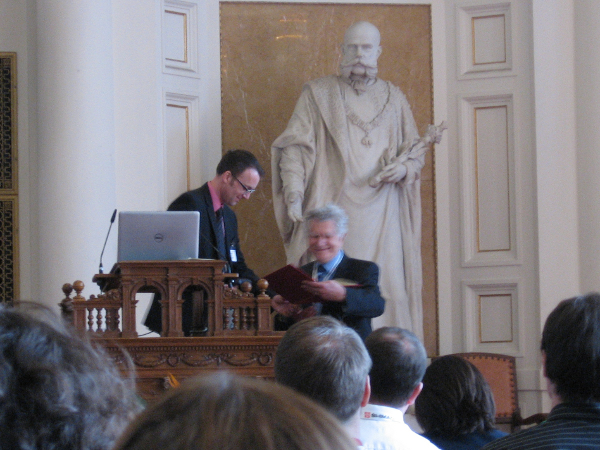 |
|
Professor Walter Gössler, Karl-Franzens-Universität Graz, Austria (left), Professor Günter Gauglitz, University of Tübingen, Germany (right). |
The Emich Badge (Emich-Plakette) of the ASAC for merits in micro-and analytical chemistry was awarded to Professor Detlef Günther, ETH Zürich, for his groundbreaking research on laser ablation / ICP-MS.
Dr. Romana Schirhagl, University of Groningen, The Netherlands, received the division prize of the division of analytical chemistry of the GDCh for young scientists.
This year’s Kirchhoff-Bunsen Prize for Analytical Spectroscopy was awarded to Professor Martin Resano, University of Zaragoza, Spain. In an inspiring talk on the subject “Molecular Analysis – Elemental Information”, he gave an overview on recent developments and applications of molecular absorption spectrometry and AAS, including forensic applications.
Perspectives
Besides talks devoted to techniques and applications, a number of lectures focused on perspectivesin analytical chemistry. Professor Renato Zenobi, ETH Zürich, Switzerland, reported about the development of near-field optical methods such as Tip-Enhanced Raman Spectroscopy (TERS), enabling a spatial resolution of 15 nm.
Mass spectrometric imaging was subject of lectures on recent developments, but also on systematic evaluation of parameters such as sample type and preparation, and perspectives towards the routine use of imaging mass spectrometry in clinical diagnostics – with personalized medicine as ultimate goal, as pointed out by Professor Günter Allmaier, Technical University of Vienna, Austria.
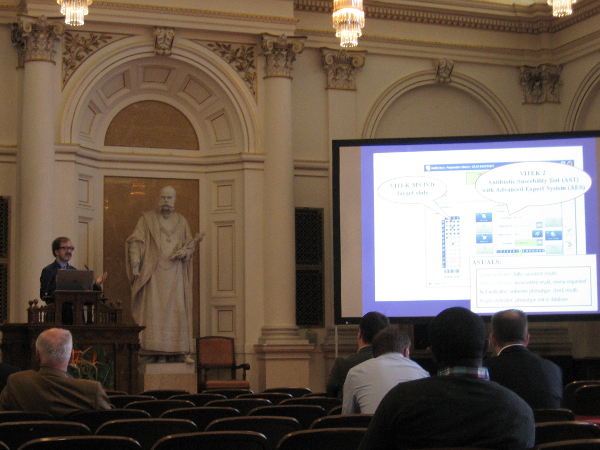 |
Numerous medical and biochemical applications were discussed, ranging from nonlinear Raman spectroscopy in tumor diagnosis up to element determination in beached whales by ICP-MS.
In his talk on the impact of climate change on food analysis, Professor Rudolf Krska, University of Natural Resources and Life Sciences, Vienna, Austria, illustrated a global perspective: Even slight temperature changes have a strong impact on agriculture, from increased occurrence of pests to the requirement of pesticides – with different degradation pathways at elevated temperatures. These shifting boundary conditions call for a sensitive and specific analysis of food and feed.
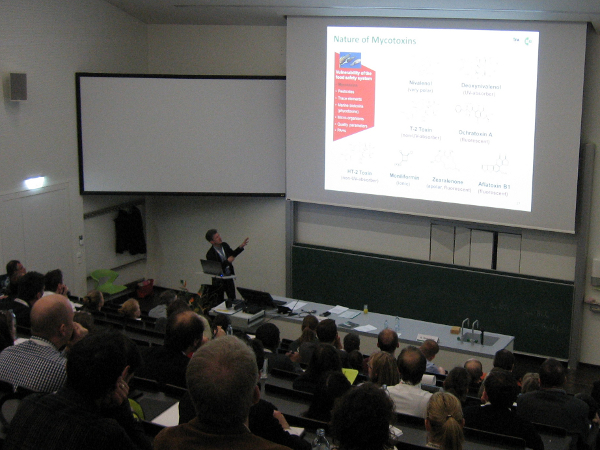 |
Besides the scientific talks, there was the opportunity to survey all areas of analytical chemistry, and time for stimulating discussions in two poster sessions. There were more than 200 registrations for poster contributions.
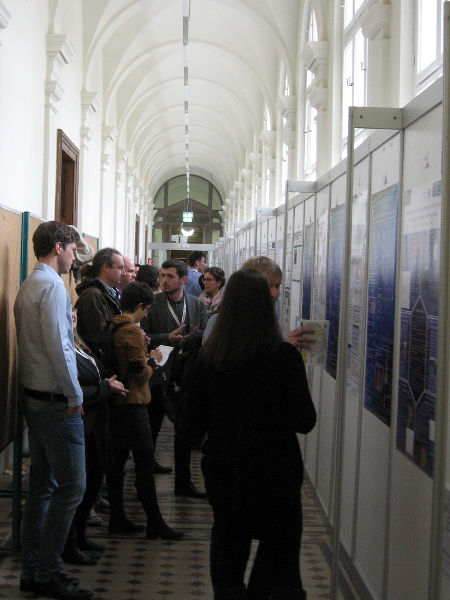 |
Discussions and exchange of ideas continued at the evening events, which took place in the Dom im Berg (a location underground in the castle hill of Graz) and in the Seifenfabrik (built as a fertilizer plant in 1872).
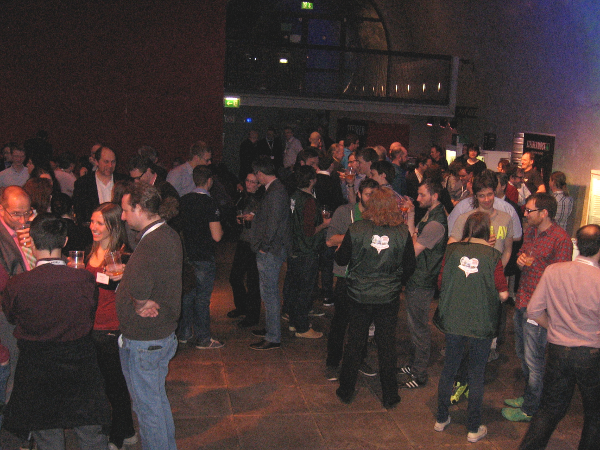 |
- Event: ANAKON 2015
